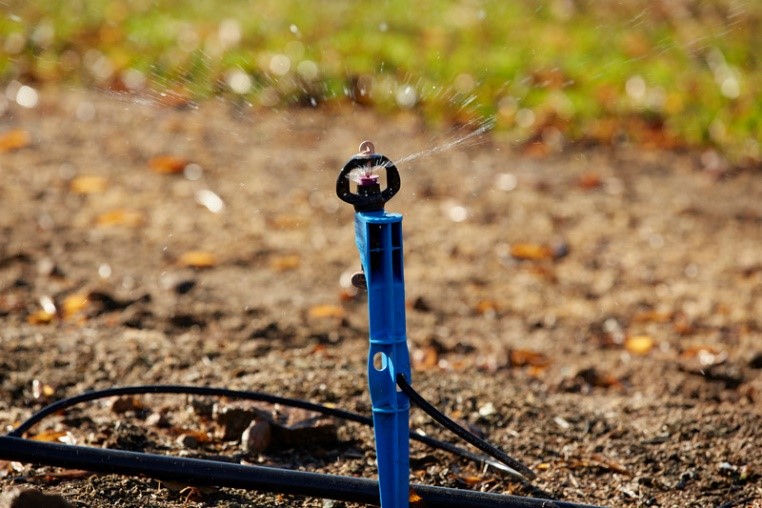As of early this November, almond growers will have to wait a little longer for the final word on a plan that poses to impact much of California agriculture.
On Nov. 6, the day before the State Water Resources Control Board was scheduled to discuss the “unimpaired flows plan,” Gov. Jerry Brown and Gov. Elect Gavin Newsom sent State Water Board Chair Felicia Marcus a letter requesting that the decision be postponed. The next day, the State Water Board voted to postpone the plan — one of the most controversial in recent years — until Dec. 11.
The unimpaired flows plan aims to protect fish by limiting how much water farmers draw from the Lower San Joaquin River and its tributaries, including the Stanislaus, Tuolumne and Merced rivers. Plans to limit withdrawals from the Sacramento River and its tributaries were also expected to be announced in coming months. According to Jesse Roseman, senior environmental specialist for the Almond Board of California (ABC), “It’s important to realize that this plan, if adopted, is going to eventually affect all of agriculture and most cities.”
Plan meets opposition, initially
This plan proposes changes to the larger Bay-Delta Water Quality Control Plan. Key among these changes, in the words of Felicia Marcus, is that “more water be left in the river.”
The state defines unimpaired flow[1] as, “the flow that would occur if all runoff from the watershed remained in the river, without storage in reservoirs or diversions, such as irrigation, power generation, or water supply.” The proposal calls for Lower San Joaquin and tributaries to be maintained between 30 and 50% unimpaired flows — that is, no more than 50 to 70% of the water could be diverted from the river for human use, i.e. drinking, irrigation and power generation.
First publicly released in September 2016, the plan immediately met sharp opposition from agricultural groups, cities, water districts and others, who recognized that more water in the rivers meant less water for farms and cities. After receiving thousands of comment letters, the Water Board revised and re-released the plan this July — again to loud outcry. Hundreds then protested on the steps of the State Capitol on Aug. 20, followed by more than 150 individuals and organizations testifying during a two-day hearing. The Water Board then deferred action until Nov. 7, saying it recognized “the complexity and sensitivity of its work to update flow requirements.”
During the Nov. 7 meeting — and following the letter from Gov. Jerry Brown and Gov. Elect Gavin Newsom — the Board voted to defer action again, this time until Dec. 11.
Economic impacts underestimated?
ABC’s Roseman said the California almond industry has been closely engaged in the planning process.
In a July 27 letter, the Almond Alliance of California suggested the Water Board’s analysis included “errors, omissions and unsupported assumptions,” which led to “significant underestimation of economic impacts.” The Alliance refuted the Water Board’s suggestion that farmers choose crops that use less water, and the “repeated assertion that there are crops that require less water.”
The Alliance said statements should be supported with evidence that such “hypothetical” crops “provide equivalent nutrients in the human diet and economic benefits to the state and nation.”
Fully understanding long-term economic impacts of reduced irrigation supplies can be challenging, Roseman said, “particularly in a crop like almonds, where significant irrigation deficits can harm a crop two years out.”
While growers view reduced surface water supplies with alarm, the ongoing implementation of the Sustainable Groundwater Management Act (SGMA) only elevates concerns. Reduced surface supplies could lead to growing dependence on pumping groundwater, even though SGMA will force many to reduce pumping to prevent further overdraft of aquifers.
Working for real solutions
 The Almond Board of California has invested in solutions, like microsprinklers, to help growers become more resilient in a future with scarcer water.
The Almond Board of California has invested in solutions, like microsprinklers, to help growers become more resilient in a future with scarcer water.
ABC has invested in solutions to help growers become more resilient in a future with scarcer water. According to Roseman, solutions include research, education and outreach to increase water use efficiency, while also evaluating opportunities for recharging groundwater aquifers during the rainy season.
Such efforts paid off with a dramatic reduction — about 33% less water used per pound of almonds compared to 20 years ago.[2] This following grower adoption of efficient practices, such as installing microsprinklers and drip irrigation, and changed horticultural practices.
However, Roseman believes more must be done to protect access to surface water supplies for growers by demonstrating creative, successful solutions to recovering fish populations.
“I have a passion for creating a Central Valley where agriculture and fish and wildlife thrive,” he said.
Saving fish and farms
Before joining ABC, Roseman managed leases and conservation easements on ‘wildlife friendly farms’ for The Nature Conservancy, working with farmers to enact conservation programs and habitat improvements. One such project involved flood plain restoration on the Cosumnes River, in part to create salmon habitat.
Other successful projects, Roseman said, included the Honolulu Bar Floodplain Enhancement Project on the Stanislaus River, which rebuilds salmon populations using restored floodplains, gravel beds and channels, and the Nigiri Project, which seeks to rear salmon fry in rice fields, and which recently was awarded funding by the Almond Board.
“Broadly speaking, studies show that fish raised on a flood plain are larger than fish raised solely in a river channel,” Roseman said. “Flooded agricultural areas can act like flood plains, so we are co-funding research to see whether larger fish raised on flooded rice can have increased survival through the Delta. If we can recover salmon populations through targeted habitat creation, there is going to be less pressure to solve that problem through reduced water supplies.”